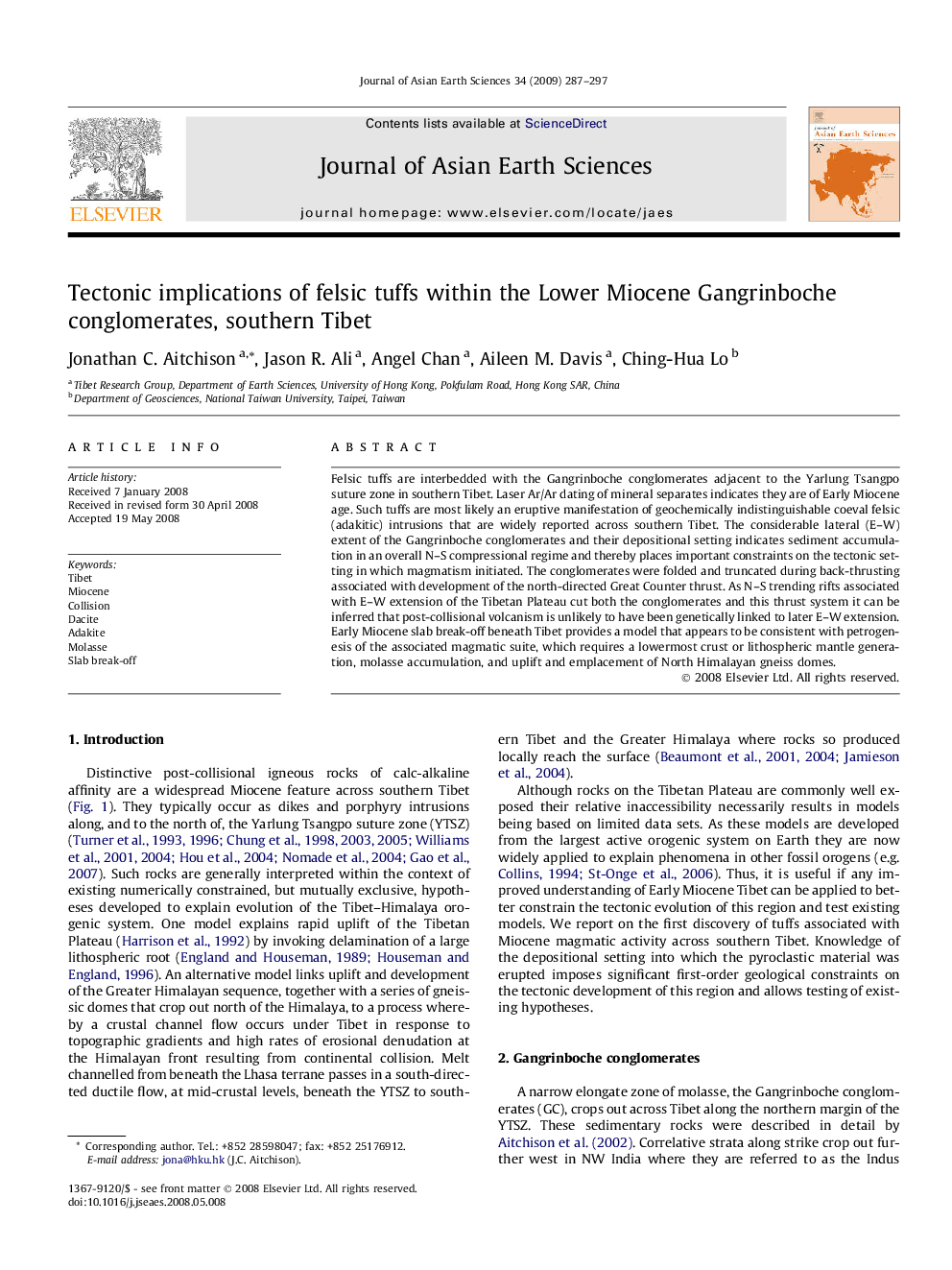| Article ID | Journal | Published Year | Pages | File Type |
|---|---|---|---|---|
| 4732444 | Journal of Asian Earth Sciences | 2009 | 11 Pages |
Felsic tuffs are interbedded with the Gangrinboche conglomerates adjacent to the Yarlung Tsangpo suture zone in southern Tibet. Laser Ar/Ar dating of mineral separates indicates they are of Early Miocene age. Such tuffs are most likely an eruptive manifestation of geochemically indistinguishable coeval felsic (adakitic) intrusions that are widely reported across southern Tibet. The considerable lateral (E–W) extent of the Gangrinboche conglomerates and their depositional setting indicates sediment accumulation in an overall N–S compressional regime and thereby places important constraints on the tectonic setting in which magmatism initiated. The conglomerates were folded and truncated during back-thrusting associated with development of the north-directed Great Counter thrust. As N–S trending rifts associated with E–W extension of the Tibetan Plateau cut both the conglomerates and this thrust system it can be inferred that post-collisional volcanism is unlikely to have been genetically linked to later E–W extension. Early Miocene slab break-off beneath Tibet provides a model that appears to be consistent with petrogenesis of the associated magmatic suite, which requires a lowermost crust or lithospheric mantle generation, molasse accumulation, and uplift and emplacement of North Himalayan gneiss domes.
